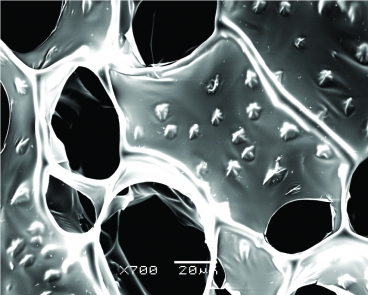A research team comprising scientists, doctors and engineers from the Children’s Hospital Boston at the Massachusetts Institute of Technology has developed cardiac patches made from very small gold wires.
 "A scanning electron microscope (SEM) image of nanowire-alginate composite scaffolds. Star-shaped clusters of nanowires can be seen in these images. Image courtesy of the Disease Biophysics Group, Harvard University "
"A scanning electron microscope (SEM) image of nanowire-alginate composite scaffolds. Star-shaped clusters of nanowires can be seen in these images. Image courtesy of the Disease Biophysics Group, Harvard University "
Scientists chose this material since it conducts electricity, can be easily produced, is accepted by the human body and has been extensively used for research purposes.
Cardiac patches that do not have gold nanowires need stimulation by electrodes to enable the cells to beat in the proper manner. During the study, when such cells were stimulated with an electrical current, a very low amount of current was passed and the cells beat in separate clusters. However, cells in the cardiac patch with the nanowires were contracting with each other without stimulation, thus proving that the tissues had conductivity. They also displayed a high amount of voltage upon stimulation from an electric current and showed greater coordination between themselves and the neighbouring cell clusters. The gold nanowires had a thickness of 30 nm and a length of 2-3 µ. The cells in the gold nanowire cardiac patch exhibited greater amounts of the proteins, troponin I, which is useful for the binding and contracting of the muscle calcium and connexin-43, which is instrumental in the coordinated functioning of the heart.
Cardiac patches of gold
According to Daniel Kohane, from the Laboratory for Biomaterials and Drug Delivery at Children’s Hospital Boston, the same nanowire technology can be adopted to any tissue that can be stimulated by electric current including the spinal cord tissue and the brain tissue. The research was sponsored by the American Heart Association and the National Institutes of Health.